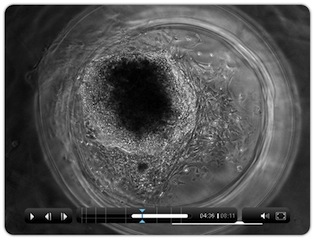One of the trickiest parts of treating brain conditions is the blood brain barrier, a blockade of cells that prevent both harmful toxins and helpful pharmaceuticals from getting to the body’s control center. But, a new video shows how an MRI machine can guide the use of microbubbles and focused ultrasound to help drugs enter the brain, which may open new treatment avenues for devastating conditions like Alzheimer’s and brain cancers.

“It’s getting close to the point where this could be done safely in humans,” said paper-author Meaghan O’Reilly, “there is a push towards applications.”
The current method of disrupting the blood-brain barrier (BBB) is by using osmotic agents such as mannitol, which suck the water out of the cells that form the barrier, causing the gaps between them to get bigger. Unfortunately, this method opens large areas of the barrier, leaving the brain exposed to toxins.
The benefit of the microbubble technique is that it can be used on a very small area of the BBB. The microbubbles, made of lipids (fats) and gas, are injected into the blood stream. When focused ultrasound is applied, the bubbles expand and contract. It is thought that the force of the movement in the bubbles causes the cells that form the BBB to temporarily separate, which allows drugs to reach the brain.
“Microbubble technology has been around for years, though its applications have mostly been as contrast agents for diagnostic ultrasound,” said Editorial Director, Dr. Beth Hovey. “This newer approach, using ultrasound to help the bubbles permeablize the blood brain barrier, will hopefully allow for better treatment of diseases within the brain.”
In this method, O’Reilly and her colleagues use the MRI machine to ensure that the barrier opens, and they can also time how long it takes for it to close, which will be important for when the technique is used one patients,
O’Reilly chose to publish the technique in JoVE to help other scientists learn the method.
“The ability of focused ultrasound combined with microbubbles to disrupt the blood brain barrier has been known for over a decade. However, because the actual technique can be challenging— there are critical steps involved— the video article fills a gap in the literature that is a major hinderance to people getting into the field,” she said.
To see the full article, please click here).





 By: Laura Ennis
By: Laura Ennis By: Supriya Kamath
By: Supriya Kamath



